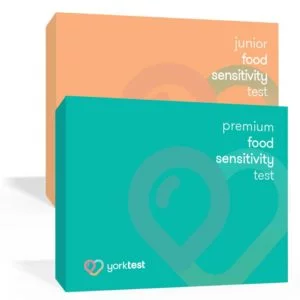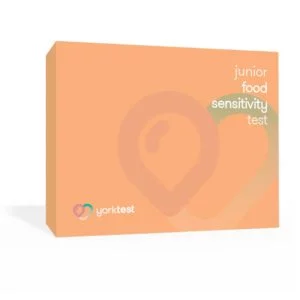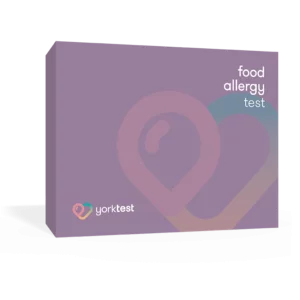Garlic Allergy: Identifying Symptoms, Testing Options, and Foods to Avoid
Garlic (Allium sativum) has been cultivated for thousands of years and is a staple ingredient across culinary traditions worldwide due to its strong, pungent flavor and aroma. These characteristics are the result of garlic’s sulfur-containing compounds like allicin or dially-disulphide, which are responsible for garlic’s distinctive flavors.
Garlic is part of the onion genus Allium, which are bulbous root plants that share similar compounds. This is why people who are allergic to garlic may also be to onions and other types of alliums like leeks and chives, a condition more broadly known as allium intolerance.
Given the complexities of such food intolerances and allergies, there’s a lot to know when it comes to garlic. Here we uproot the unique nature of garlic allergy and better understand the symptoms, causes, testing options, foods to avoid, and more.
What is a Garlic Allergy?
A garlic allergy is a reaction that happens when your immune system inadvertently identifies certain compounds in garlic as harmful. When the body misidentifies garlic as an intruder, this can bring about an allergic reaction, leading to anything from slight discomfort to serious reactions.
The culprit behind this condition is specific compounds found within garlic known as alliin lyase enzymes. When we chop or crush garlic, these enzymes mix with other components to form allicin, the compound responsible for the strong aroma of fresh-cut garlic, and in rare cases, an allergic reaction.
In other words, it’s not only the pungent scent of allicin that draws our olfactory, but it’s also one of the key allergens causing reactions in individuals sensitive to garlic. Allicin, along with diallyl disulfide (another sulfur-containing compound), are the primary triggers of hypersensitivity or allergy symptoms in garlic.[1]
Garlic Intolerance vs Allergy
An important distinction needs to be made between food allergies and intolerances because they’re often mistaken for each other but involve different body systems and mechanisms. In simple terms, an allergy or sensitivity involves your immune system while an intolerance to garlic may affect digestion if you are sensitive to FODMAP foods.
In the case of a true garlic allergy, the immune system responds to the compounds in the plant as harmful, thereby triggering an IgE-mediated immuno-defense mechanism. Even tiny amounts can trigger serious reactions like difficulty breathing or anaphylaxis, which is a life-threatening reaction that requires immediate medical attention.
However, those who have a garlic intolerance or sensitivity may still tolerate small portions of the blub without experiencing unpleasant symptoms. Yet,, with larger quantities, intolerance symptoms could escalate to more severe digestive problems, like bloating and gas or diarrhea.
Symptoms of Garlic Allergy and Sensitivity
What if you have a garlic sensitivity rather than an allergy? People often use the two terms interchangeably, but they are different reactions involving different bodily responses. Understanding the differences is key for managing symptoms and adapting your diet:
- A garlic allergy elicits an IgE antibody immune response whereas a garlic sensitivity triggers an IgG antibody response.
- Symptoms of an allergic reaction can begin immediately, or shortly after, contact with a trigger allergen. On the other hand, symptoms of garlic sensitivity can take several hours, or even days, to appear.
- The typical profile of symptoms differs. Whilst a garlic allergy is linked to swelling, itching, and sneezing, a sensitivity is more likely to trigger symptoms such as:
- Diarrhea
- Bloating
- Skin conditions e.g. eczema or psoriasis
- Headaches
- Fatigue
If you are experiencing any of the symptoms on the list above, we recommend taking a Premium Food Sensitivity Test to see whether garlic is triggering an IgG reaction in your body.
Garlic allergies are rare compared to other food allergies, but studies indicate garlic-related allergies are prevalent in about 2.9% of children and adults.[2] This can cause both mild to severe symptoms, including:
- Skin rash (contact dermatitis)
- Hives, itching, or redness of the skin
- Tingling or itching of the mouth
- Swelling in the mouth, face, tongue, or throat
- Wheezing or shortness of breath
- Fast heartbeat
- Stomach pain
- Diarrhea
- Nausea or vomiting
- Dizziness or fainting
- Anaphylaxis
If you are allergic to garlic, knowing what foods to avoid can help completely alleviate your symptoms. If you have a food intolerance to garlic, there may be ways to still enjoy allium foods without experiencing too much discomfort. The support of nutritionists, dieticians, or related healthcare specialists can be a supportive resource to mitigate symptoms.
Garlic and Onion Sensitization
If you’ve ever had a bad reaction to garlic, you might have also noticed that onions can give you trouble. But why is this the case? The answer lies in their shared family: Allium.
Garlic and onions are part of the same botanical family called Alliaceae. Due to their relatedness, the proteins and chemical compounds present in garlic and onions can trigger an immune response if one is allergic or intolerant. This recognition leads to an immune response causing symptoms such as itching, swelling, or even difficulty breathing.
One Saudi study discovered an 80% prevalence of people having coexisting IgE-mediated allergic responses to both garlic and onion.[3]
Why Does Cross-Reactivity Occur?
In terms of allergies and sensitivities, there’s something known as ‘cross-reactivity’. This means if someone is allergic to one substance within a certain group (like the Allium family), they may be likely to react negatively towards others within that same group.
This cross-reactivity explains why people who are sensitive or allergic to garlic often find themselves reacting similarly when consuming onions – both raw and cooked form. The same goes for other members of the Allium genus including leeks, chives, and shallots.
As in the case of some foods, you might think cooking or processing would counteract these problems by breaking down allergenic proteins. Although heat does alter protein structures somewhat lessening their severity on our immune system (just like it does with carrot allergy), unfortunately, it doesn’t always make enough difference for those with severe sensitivity or allergy issues. In fact, some folks report more intense reactions after eating processed versions like onion powder or garlic oil.
Foods to Avoid with Garlic Intolerance and Allergy
If you have a garlic intolerance or allergy, you should avoid consuming garlic and foods that contain garlic in any form. Symptoms can be caused by a sensitivity to foods containing sulfur, so it may be helpful to be aware of sulfur-containing ingredients that may trigger symptoms.
With most garlic allergy and intolerance cases, you may also be sensitive to other foods in the same family as garlic, such as onions, chives, leeks, and asparagus.
It’s also important to read food labels carefully and avoid foods that contain garlic or garlic powder. Common garlic-containing foods include:
- Sauces, such as pasta sauce, barbecue sauce, and salad dressing
- Soups
- Boxed pasta and rice dishes
- Frozen meals
- Spice mixes
If you are dining out, check with restaurant staff before ordering dishes that may contain garlic. If you are truly allergic, the best way to navigate your condition is with knowledge and proper testing.
Garlic Allergy and Intolerance Test
If you’ve ever experienced discomfort after eating garlic, you might wonder if it’s due to an allergy or intolerance. This is where a garlic allergy and intolerance test can provide clarity.
A garlic allergy test typically includes a skin prick or blood draw to assess the presence of IgE antibodies associated with garlic proteins. If these antibodies are detected, it signifies that your immune system perceives garlic as harmful.
In contrast, a food intolerance or sensitivity test looks at IgG antibody levels in response to various foods including garlic. These tests aim not just at identifying immediate allergic reactions but also delayed responses associated with food intolerances.
Your doctor or allergist can typically conduct allergy testing in their office. They’ll use a tiny amount of extract from raw garlic on your skin using either a small needle or a plastic device. After about 15-20 minutes, they’ll look for signs like redness or swelling indicating an allergic reaction.
There are also at-home food sensitivity tests which make testing easy and convenient.
Finding out whether you’re dealing with an actual allergy versus an intolerance is important to identify and better understand your condition.
Garlic Substitutes
If you’re dealing with a garlic allergy, there are plenty of tasty alternatives that can add flavor to your meals without triggering symptoms.
- Fennel Bulb: A fantastic substitute for garlic is the fennel bulb. Its licorice-like taste gives dishes an intriguing spin. When fried, it provides a sweet and slightly spicy note akin to roasted garlic.
- Celery Root: Celeriac or celery root, offers a delicate yet distinctive aroma similar to celery stalks. It can be minced finely and used in soups, stews, or sauces where you’d typically use garlic.
- Garlic Chives: The green shoots of the allium family like garlic chives, offer mild garlicky notes while being gentler on sensitive stomachs. They work great as garnish but also be cooked into stir-fries or scrambled eggs.
- Truffle Oil: Its strong flavor and aroma can be used as a substitute for garlic in recipes. It is a good option for people who are looking for a bold flavor without garlic.
- Tamari Sauce: A popular gluten-free alternative to soy sauce, Tamari adds a rich umami flavor without the need for garlic.
- Cumin: For a smoky, slightly spicy flavor, cumin is an ideal choice for Mexican and Indian cuisines. It’s often used in Mexican and Indian cuisines as an aromatic spice that can take your dish up several notches.
- Asafoetida: This spice is commonly used in Indian cuisine. It has a strong flavor and aroma that is similar to garlic and can be used as a substitute for garlic in recipes.
It is important to note that these substitutes may not have the exact same flavor as garlic, but they can be used to add a similar flavor to your dishes.
Managing a Garlic Allergy
The most effective way to treat a garlic allergy is simply by steering clear of this ingredient in both its raw and cooked forms. Navigating the grocery aisles can be tricky, as many processed foods contain garlic in some form or another. Reading food labels diligently will become second nature over time – look out not just for ‘garlic’, but also phrases like ‘natural flavors’ or ‘spices’, which might contain hidden traces of garlic.
In the event that you accidentally consume garlic, it’s important to have an action plan ready based on your doctor’s advice. This may include taking antihistamines immediately after consumption or using an epinephrine auto-injector if symptoms escalate into severe allergic reactions such as difficulty breathing or swelling of the throat.
As always, consult with your doctor or a qualified nutritionist or dietician who can help provide the necessary testing, treatment, and management of such allergies.
Scientific References:
- https://www.thermofisher.com/diagnostic-education/hcp/us/en/resource-center/allergen-encyclopedia/whole-allergens.html?key=f47
- Armentia A, MartÃn-Armentia S, Pineda F, MartÃn-Armentia B, Castro M, Fernández S, Moro A, Castillo M. Allergic hypersensitivity to garlic and onion in children and adults. Allergol Immunopathol (Madr). 2020 May-Jun;48(3):232-236. doi: 10.1016/j.aller.2019.06.005. Epub 2019 Aug 30. PMID: 31477394.
- Almogren A, Shakoor Z, Adam MH. Garlic and onion sensitization among Saudi patients screened for food allergy: a hospital based study. Afr Health Sci. 2013 Sep;13(3):689-93. doi: 10.4314/ahs.v13i3.24. PMID: 24250308; PMCID: PMC3824438.











